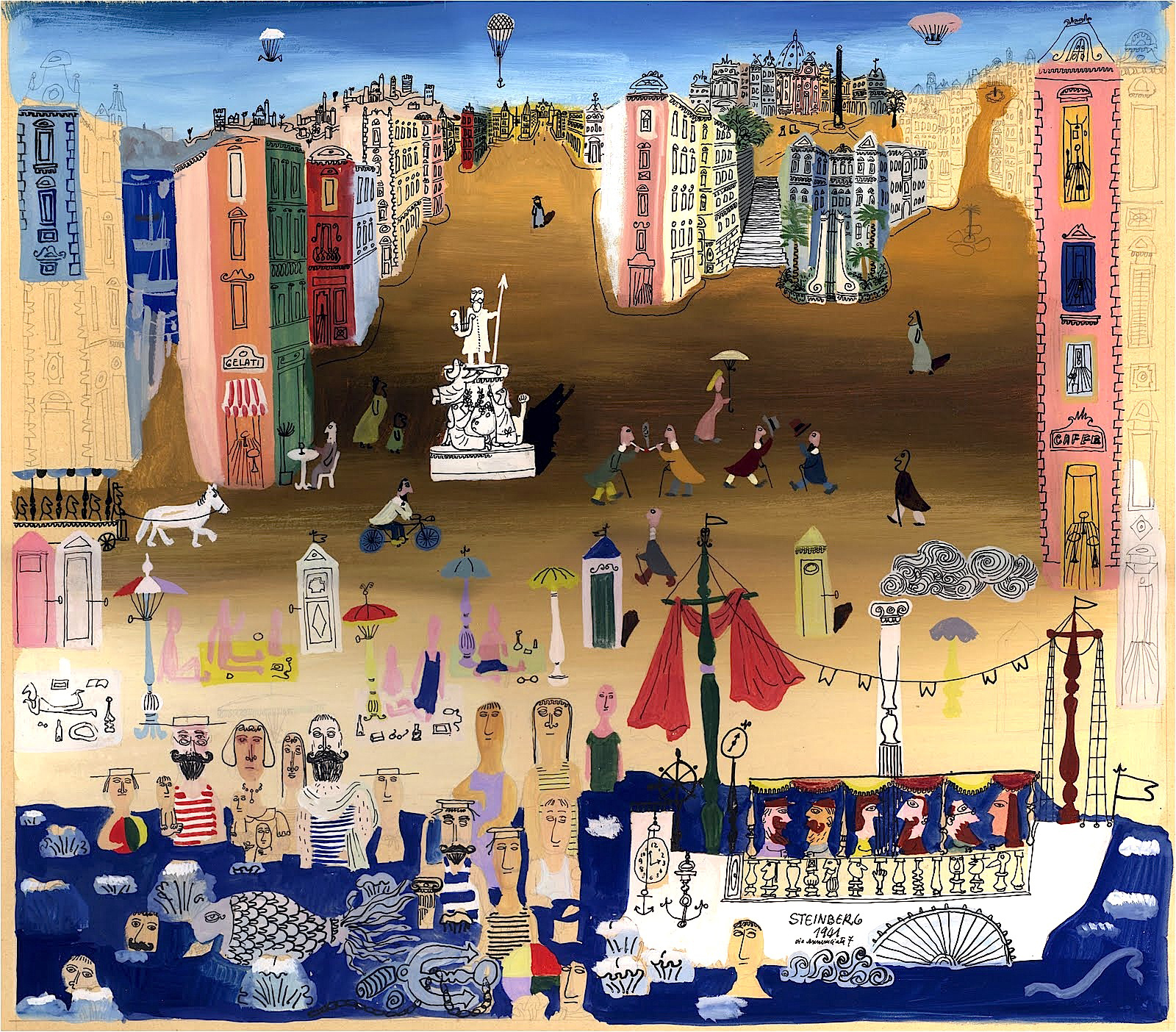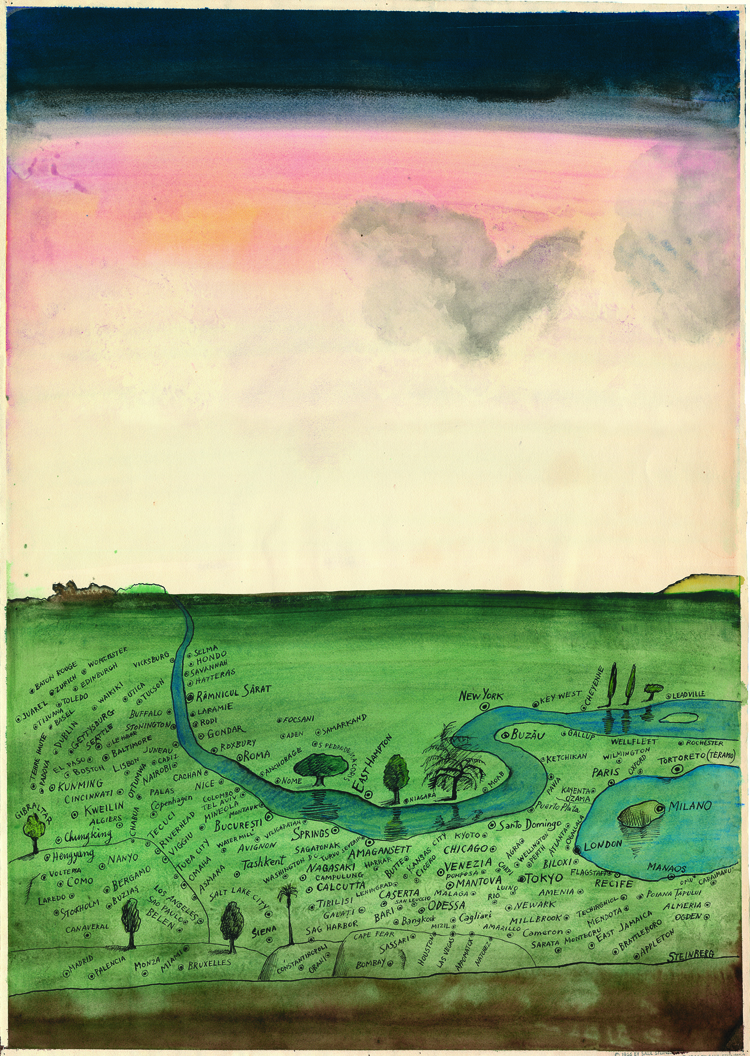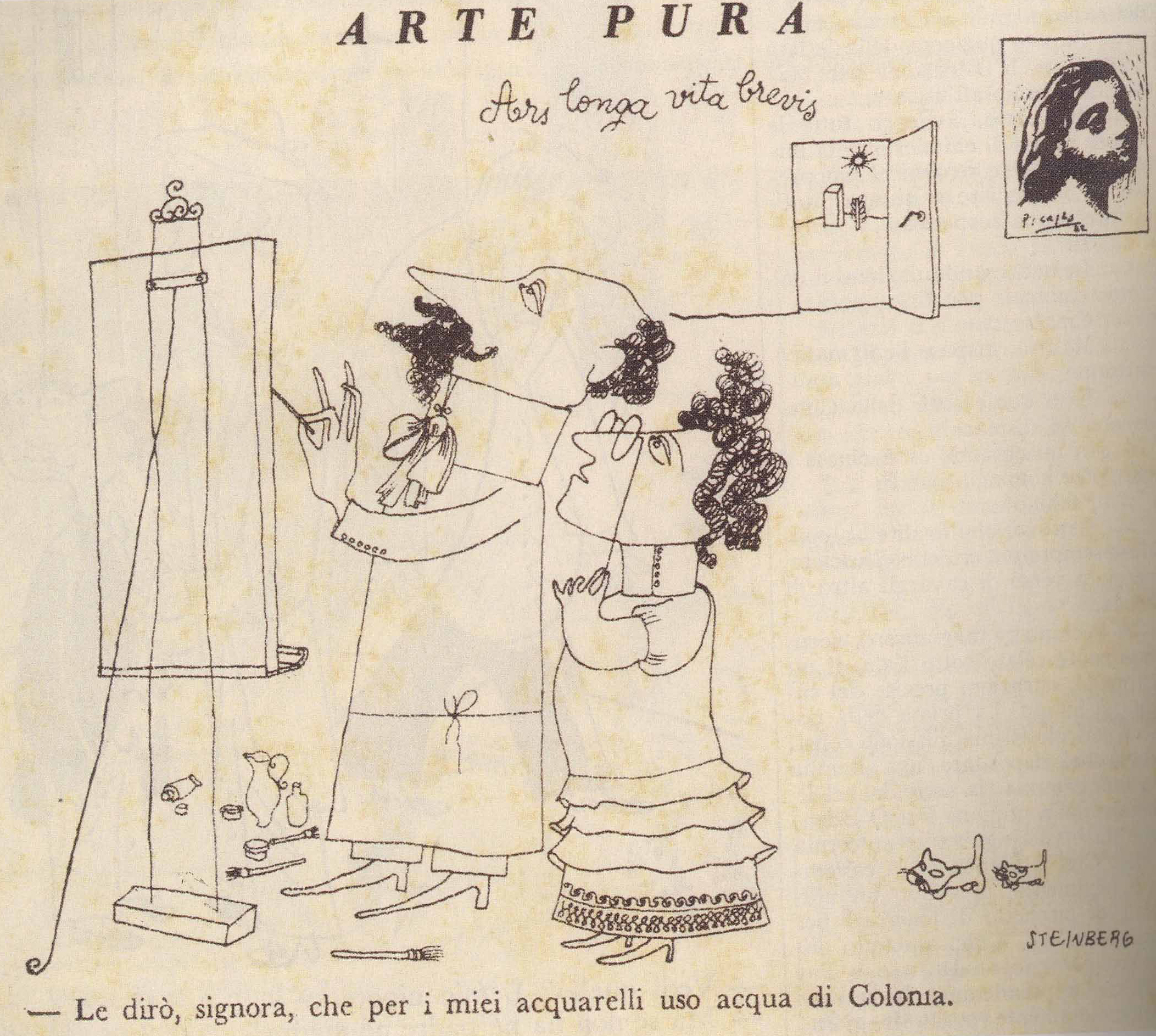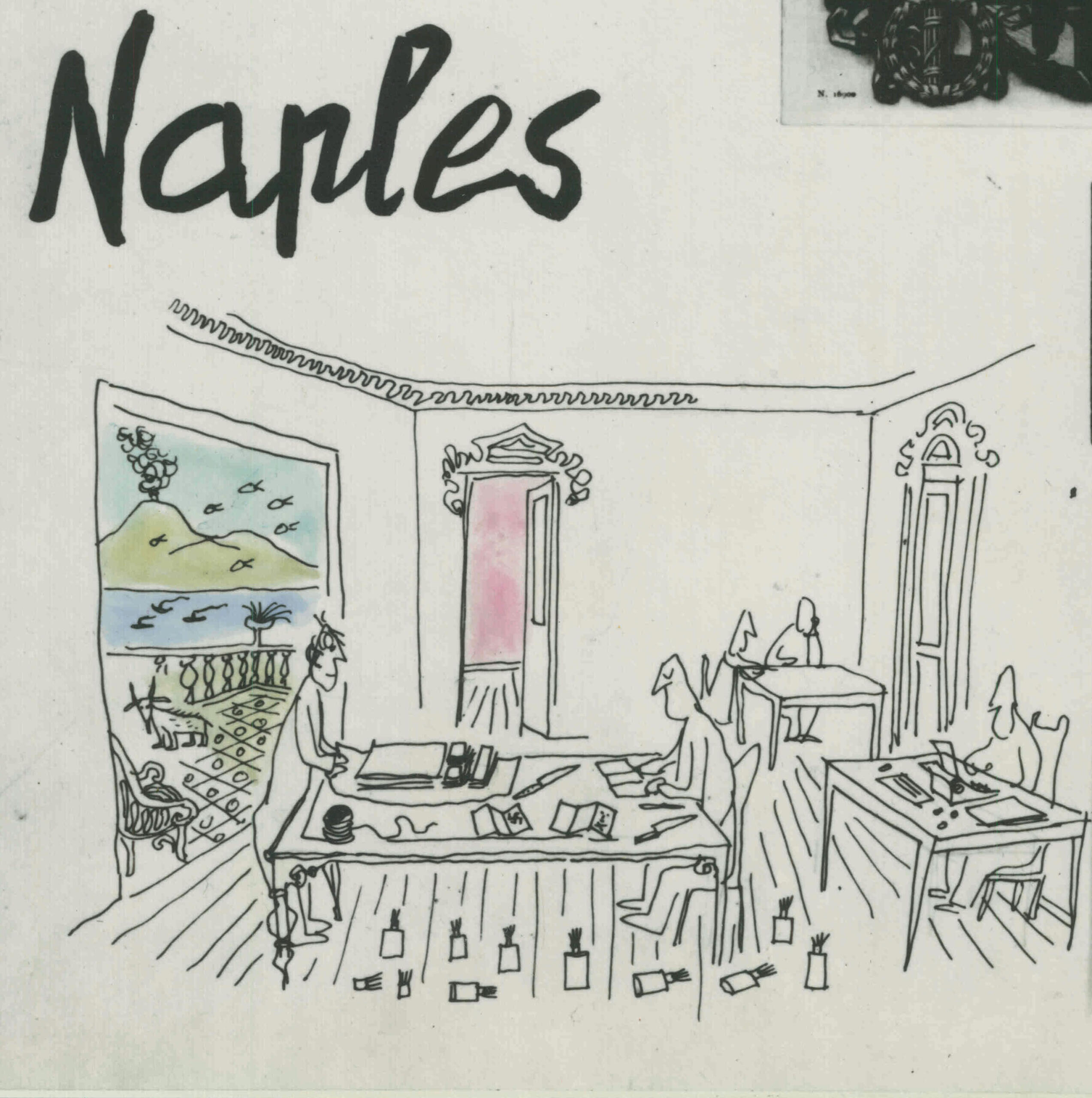

Steinberg before STEINBERG
Lecture by Mario Tedeschini Lalli, Rome (Italy)
May 22, 2024 @ 12:00 pm - 1:00 pm
| FreeIn this presentation Mario Tedeschini Lalli, Italian journalist and scholar of 20th century history, tells the story of Saul Steinberg, before he became STEINBERG, the majuscules with which he signed his name to the art most people know, using some of his public art, some of his clandestine art, some of his personal art and – yes – some of his top secret art.
Image above: Saul Steinberg, Seaside, 1941. © The Saul Steinberg Foundation/Artists Rights Society (ARS) New York
The art of Saul Steinberg (1914-1999) was arguably one of the most recognizable for the US public from the mid-1940s until his death in 1999. Much of Steinberg’s best-known work appeared in magazines such as The New Yorker, but he also produced a larger body of drawings, paintings, and sculptures for gallery and museum exhibitions. His work cannot be fixed to one style or school. Though he is sometimes mistakenly called a cartoonist or illustrator, he was never less than a full-fledged artist. His life was as distinctive as his art, and as hard to pinpoint and define – it certainly did not help that he considered “autobiography—the last refuge of the scoundrel.” He would never divulge much about his life and what he did say was often misremembered or misrepresented; his tales almost became part of his artistic creations. Instead of self-revelatory disclosures, he hid details of autobiography in his art, where the casual observer could not detect them – unless, of course, they were already aware of them. An intellectual labyrinth by a master of labyrinths.

Saul Steinberg, Autogeography, 1966. Ink, gouache, and watercolor, 29 ½ x 20 ¾ in.
The Saul Steinberg Foundation, New York.
© The Saul Steinberg Foundation/Artists Rights Society (ARS) New York
Saul Steinberg in Milan. Unknown Photographer.
© The Saul Steinberg Foundation/Artists Rights Society (ARS) New York
Steinberg was especially reserved about his first thirty years: a Romanian Jew who was forced to leave his increasingly anti-Semitic country, he studied architecture in Italy, where he began his artistic career, only to be forced out once more by the racial laws of his adopted country. He ended up in the US and within a few months found himself in the thick of war as a propaganda artist working for Morale Operations division of the Office of Strategic Services (OSS).

Saul Steinberg, Arte Pura, published in Bertoldo, August 8, 1937.
“I told you, Madam, that for my watercolors I use eau de Cologne.” © The Saul Steinberg Foundation/Artists Rights Society (ARS) New York

Saul Steinberg, Naples OSS.
© The Saul Steinberg Foundation/Artists Rights Society (ARS) New York
Mario Tedeschini Lalli is a retired professional journalist and a scholar of 20th-century history. He has published several essays on Saul Steinberg’s early life and work, including “Descent from Paradise: Saul Steinberg’s Italian Years (1933-1941)” (Quest, no. 2, October 2011). Previously he wrote extensively about Italian and Fascist policies towards the Arab world and Arab nationalism. His most recent book, “Nazisti a Cinecittà” (Nutrimenti Editore, Rome: 2022), tells the story of former SS officers who lived in Italy after the war and worked in the booming Italian movie industry of the time. As a journalist he covered international affairs for many years in different newspapers, then moved into digital journalism, editing news websites, teaching and consulting in digital news publishing.
Please find Mario Tedeschini Lalli’s following publications online: Descent from Paradise: Saul Steinberg’s Italian Years (1933-1941) (2011) and Nazisti a Cinecittà.
This event is part of the online series “Flight or Fight. stories of artists under repression.”
Please donate generously to make programs like this possible. Thank you.
The Fritz Ascher Society is a not-for-profit 501(c)3 organization. Your donation is fully tax deductible.


